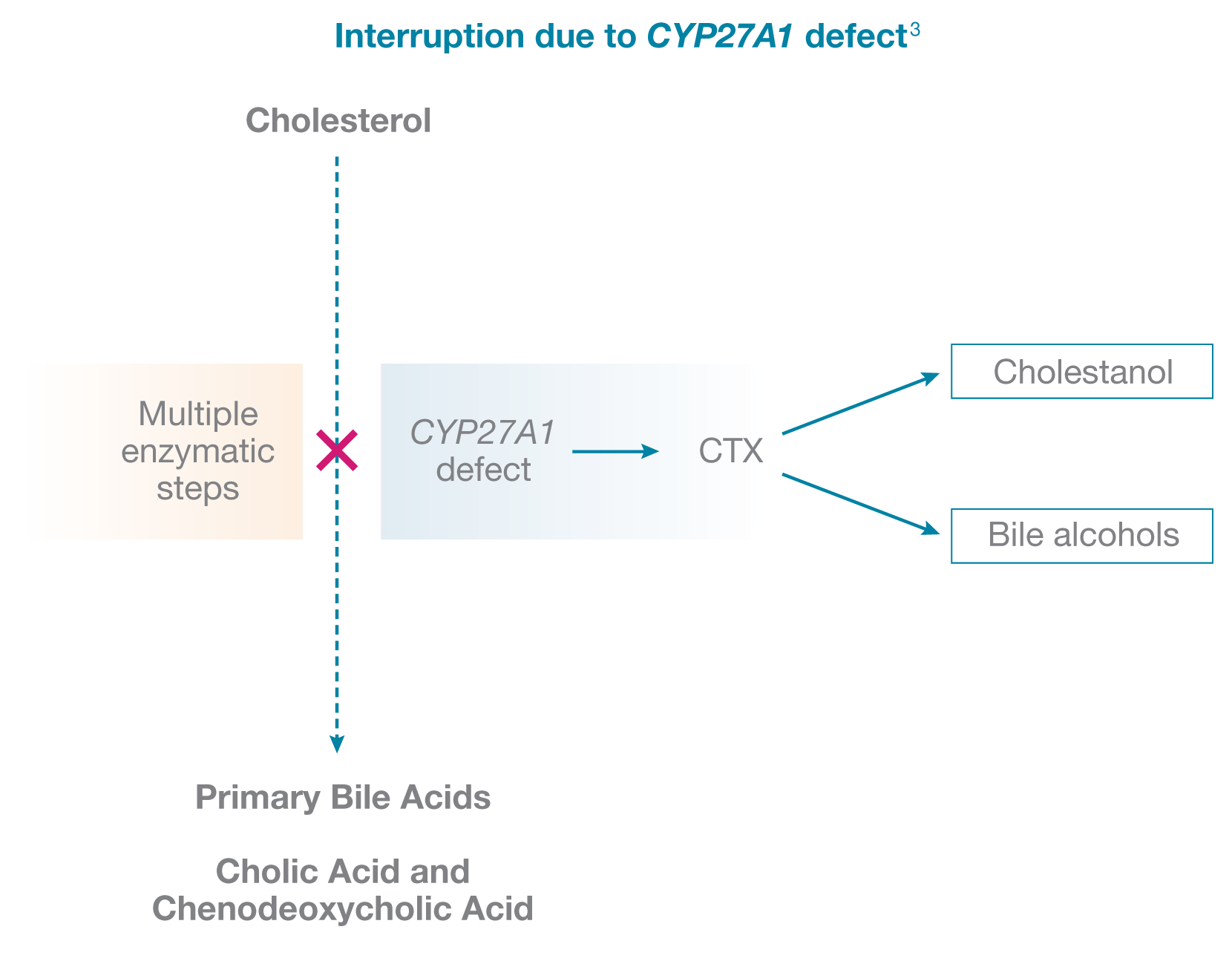Signs and symptoms of CTX
Learn more about the manifestations caused by cholestanol build up in CTX.
For US HCPs Only
27-hydroxylase catalyzes a critical step in the acidic pathway for cholesterol elimination via conversion to bile acids in the liver.1,2
In CTX, sterol 27-hydroxylase deficiency reduces the production of cholic acid and chenodeoxycholic acid (CDCA)—the most common endogenous bile acids.1,3,4 Because bile acids are inhibitors of CYP7A, this negative feedback mechanism is lost and the process of cholesterol elimination is interrupted. This leads to increased levels of bile alcohols and other bile acid precursors including 7α, 12α-Dihydroxy-4-cholesten-3-one and accumulation of cholestanol and cholesterol throughout the body with toxic effects.1,2,5

The information contained in this website is intended for healthcare providers and not for the general public.
References: 1. Chiang JYL. Front Biosci. 1998;3:176-193. 2. Gallus GN, et al. Neurol Sci. 2006;27:143-149. 3. Moghadasian MH. Clin Invest Med. 2004;27:42-50. 4. Berginer VM, et al. N Engl J Med. 1984;311:1649-1652. 5. Rafiq M, et al. Pract Neurol. 2011;11:296-300.
©2024 Mirum Pharmaceuticals, Inc. All rights reserved. March 2024 US-DS-2300059
